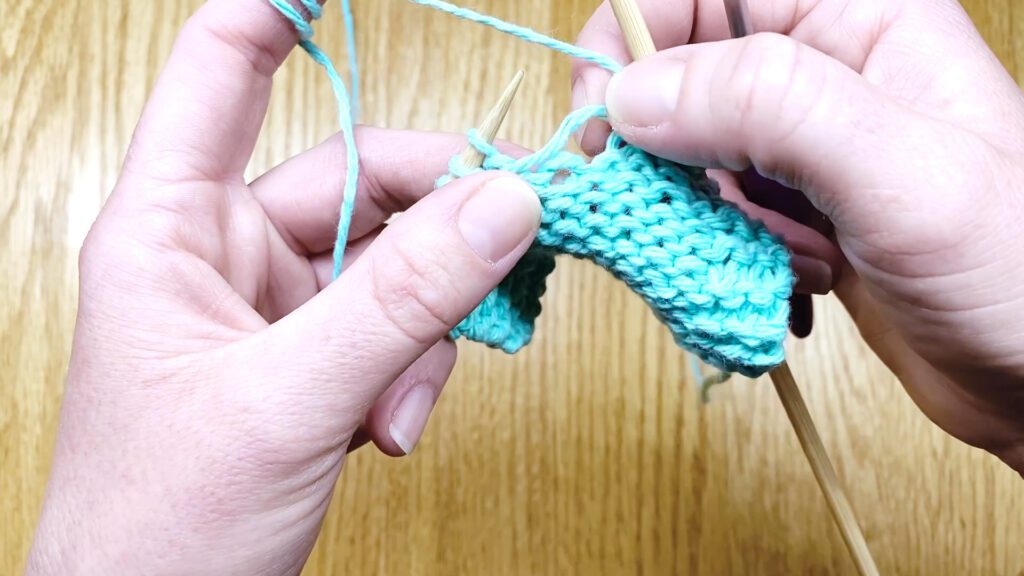
You will occasionally find a knitting pattern that asks you to switch needle sizes when you already have live stitches on the needles. Designers usually include this instruction when they want you to change your stitch size and knitting tension. This can help to prevent saggy cast-on rows. Switching needle sizes can also help ensure that your stitches match in size when you shift from one knitting pattern to another within the same design. For example, knit purl rib tends to be knit more loosely than stockinette stitch; using a smaller needle for your ribbing can help the two sections match more closely. Pattern-writers may also use a needle size change to add visual interest to their designs.
Below you will find both video and written guides to help you learn how to switch needle sizes on flat knits. I will show you how I switch needle sizes after knitting the cast-on row and turning my work. I am knitting this flat piece with circular needles, but these instructions also apply when you are using straight knitting needles.
Video Guide: How to Switch Needle Sizes on Flat Knits
Written Guide: How to Switch Needle Sizes on Flat Knits

Switch Needle Sizes, Step 1:
Work up to the point where the pattern instructs you to switch needle sizes, then set the needle in your right hand aside.

Switch Needle Sizes, Step 2:
Pick up a needle in the new size with your right hand, ensuring the needle tips point toward each other.

Switch Needle Sizes, Step 3:
Begin working the live stitches off the old needle size and onto the new needle size.

Switch Needle Sizes, Step 4:
When you have finished working the row, your left needle (in the old size) will be free of the project.

Switch Needle Sizes, Step 6:
Turn your work. Then, with your right hand, pick up the second needle in the new size and prepare to knit the next row. You have now completely switched knitting needle sizes.
Practice With My Knitting Pattern

Try switching needle sizes with a knitting project. My free Slipped Stitches Scarf asks you to switch from a smaller needle to a larger needle after you cast on. This keeps the first row from being loose and saggy. Give it a try.

Up Next

It’s time to level up your knitting! In the next lesson, I will introduce you to “knitting in the round.” You will learn to make a seamless tube with double point needles. Then, you can make your first ear warmer headbands!




























































































